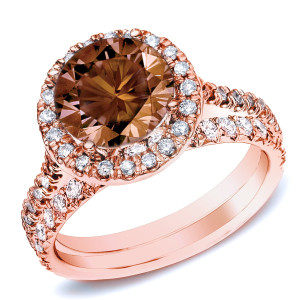The shape of a diamond can play an important role in determining its price. For example:
♦ A 0.07-carat square may cost up to 20% more than a round diamond of the same weight, color, and quality.
♦ A 1-carat colorless round diamond might cost 15%-30% more than a one-carat square diamond of the same color grade and quality.
♦ A 1-carat intense-yellow round diamond can cost from 10 % to over 100 % more than a radiant with the same weight and color grade, depending on the stones and the dealer selling them.
There are a variety of reasons why round and fancy-shape diamonds are priced differently. Small rounds are sometimes priced lower than fancy shapes because of lower inventory and labor costs. (The additional labor cost of small fancies is partially due to the specialized skills needed to cut them). Small rounds sell more quickly so less of a profit margin is needed to cover the cost of keeping them in inventory. It's less time consuming to cut, measure, and select small rounds than small fancy shapes. Consequently, labor costs can be lower. However, the price differential between small round and fancy-shape diamonds sometimes decreases to the point where both are priced about the same during periods of very high demand for small rounds.
In sizes over one-fourth carat, rounds usually cost more than other shapes. The percentage difference can vary, though, depending on the size and quality of the stone, the supply and demand at the time of sale, and the dealer selling the stones. Since the pricing of the different shapes is complex, it's easiest for consumers to simply compare stones of the same shape when pricing diamonds.
Inventory costs for large rounds can be just as high as those for large fancy shapes because there are fewer buyers in the market for larger, more expensive diamonds. In addition, there is a greater demand for round diamonds than for fancies, so large round diamonds tend to cost more than most fancy shapes of the same sii.e and quality.
Fancy shapes may display a stronger face-up color than rounds cut from the same rough. This is one of the main reasons intense yellow round diamonds cost more than intense yellow radiants. The rough of the round diamond must be darker than that of the radiant to achieve the same intense yellow face-up color, partly because cutters can't play as much with the angles and shape of rounds to maximize the color. The stronger the color of the rough, the higher the pnce of the rough. The final price of the diamond is based to a large degree on the cost of the rough.
The shape of a rough diamond crystal before it's cut also plays a role in diamond pricing. When long diamond crystals are cut into ovals, pears and emerald cuts, they normally weigh more than if they had been cut into rounds. This means the per carat cost of the fancy shape can be lower than a round and still bring the same amount of profit from the original rough diamond.
Cutting style can have a slight effect on prices. Radiants (octagonal brilliant cuts) may cost slightly more or less than emerald cuts (octagonal step cuts) of the same size, color and quality depending on what is currently in demand. Trademarked cutting styles usually cost more than generic cuts. Sometimes the price difference is due to the quality of the cutting.
In next artlcle I will talk about Judging Shapes of diamonds. The blog will be updated next Tuesday.












































